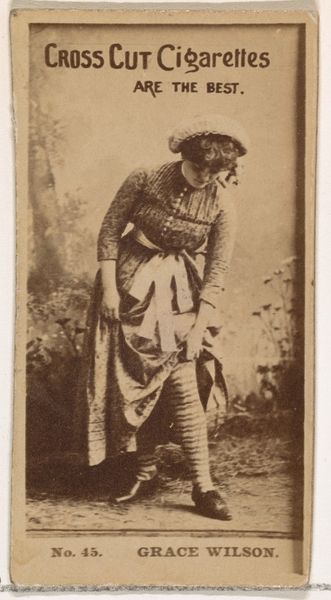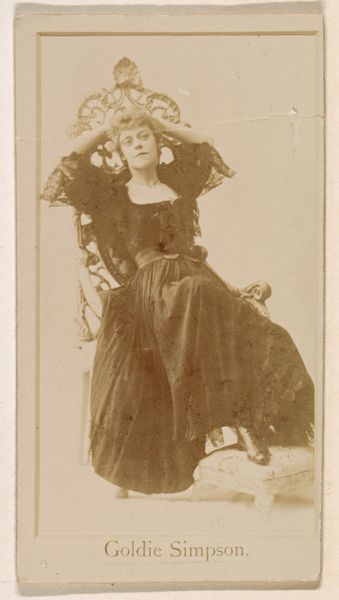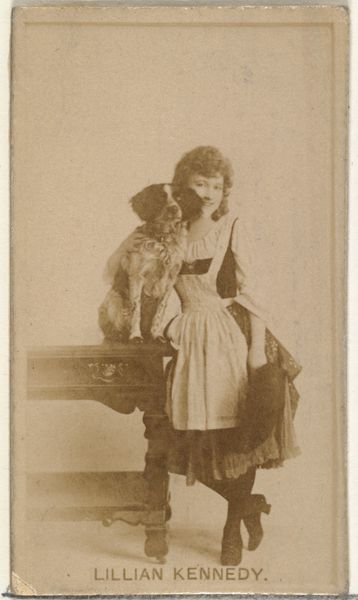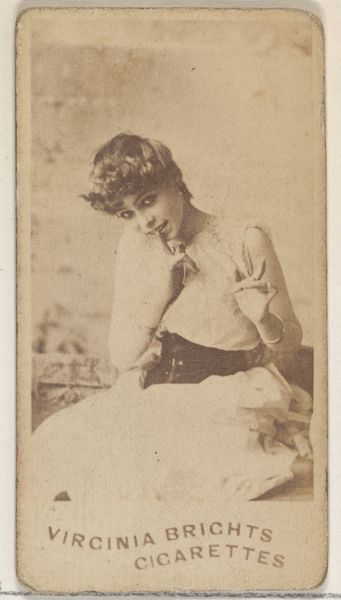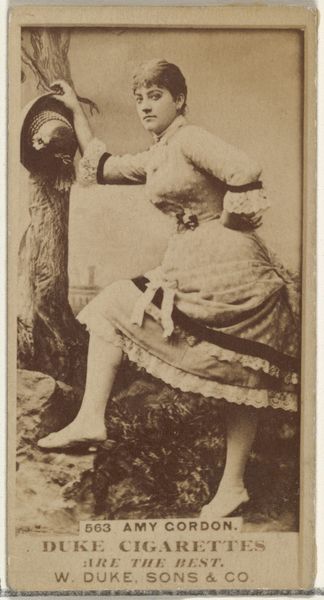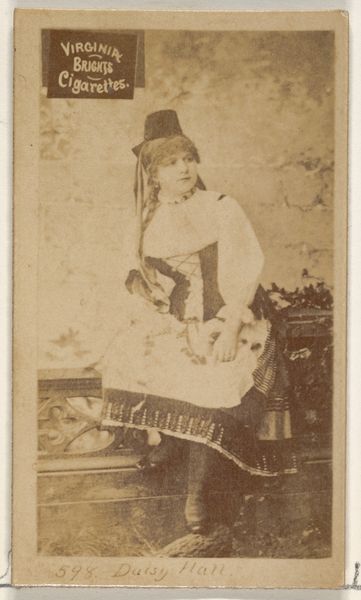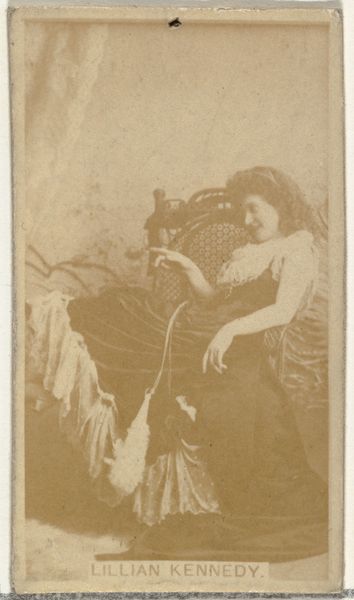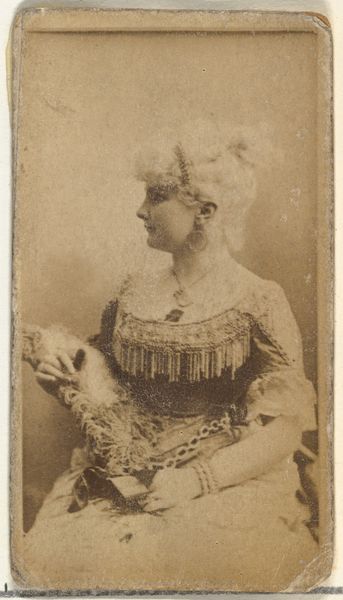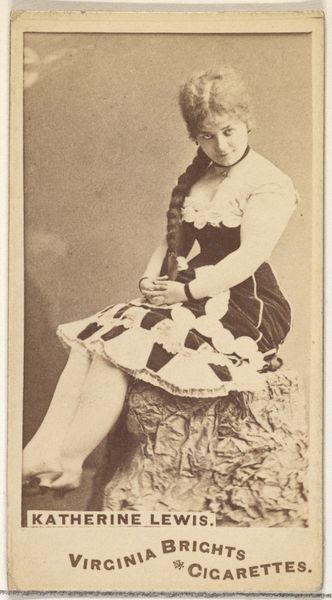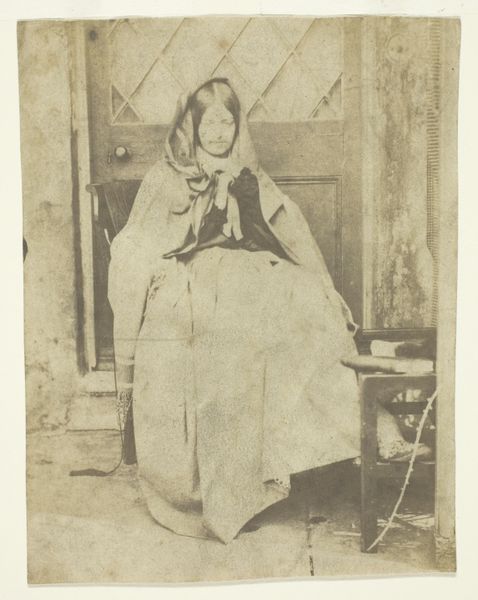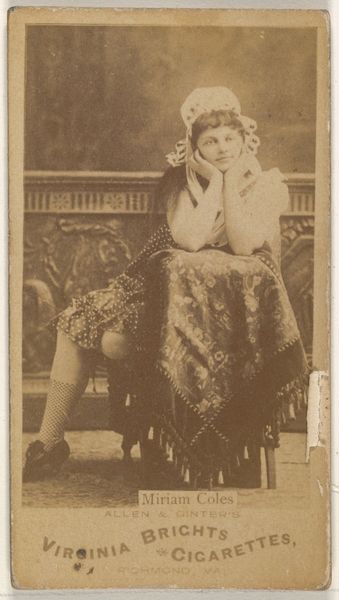
Copyright: Public Domain
Curator: Oh, what a melancholic scene. I see someone haunted. Editor: Indeed. What we have here is Pierre-Louis Pierson's albumen print titled "Marie Stuart," created sometime in the 1860s. You can find it on display at the Metropolitan Museum of Art. Curator: Ah, the doomed queen herself. Even in sepia tones, you can almost feel the weight of history, of injustice... It’s romantic in that Victorian sort of way. All tragedy and shadows. That dress, though! Bold choice for someone about to, well, you know. Editor: Exactly, it plays with the fascination Victorians had with history painting. Pierson was clever; the albumen print process allowed for mass production, making iconic figures accessible to a wider audience. But there’s a performance aspect as well, I believe it was the Comtesse de Castiglione posing for the role, as a vehicle to portray a political ideal. Curator: Performance is the word. The drama is dialed up to eleven, even if the photographic technology itself was quite new at the time. I mean, look at the carefully constructed composition, the way the light falls on her face, that ornate chair… Everything is saying “tragedy,” but with such... theatrical flair. It's like a stage play distilled into a single, potent image. Editor: I see it more as reinforcing historical narratives through photographic means, aligning the Comtesse with a symbolic figure like Mary, Queen of Scots to express notions of sovereignty and defiance. The photograph transcends mere portraiture and becomes an active agent in the construction of collective memory and political discourse. Curator: Well, whether propaganda or pure art, it definitely hits a nerve. It is a great image. Editor: Agreed, there's a complex interplay between history, representation, and power that speaks volumes about the 19th-century’s political image. Curator: Right! Makes me think about how we continue to reinterpret historical figures today, giving them new roles, even, dare I say, new agency. Editor: A point to ponder. And that's what makes it an enduring artwork: its capacity to continually engage in dialogue with new contexts.
Comments
No comments
Be the first to comment and join the conversation on the ultimate creative platform.
